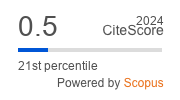Abstract
Aim. To determine the frequency and study the risk factors of transient neonatal myasthenia (TNM).Materials and methods. The study included 194 cases of pregnancy in patients with Myasthenia Gravis, observed at the Research Center of Neurology from September, 2015 to January, 2019. For analysis, data from two cohorts were combined: retrospective (151 pregnancies) and prospective (43 pregnancies). TNM was diagnosed in 31 (16%) of newborns. A univariate analysis of the features of maternal myasthenia and the characteristics of newborns in groups with and without TNM was carried out. Student’s t - test and Pearson 2 were used to compare groups. Calculated: odds ratio (OR) and 95% confidence intervals (CI).Results. The risk of TNM is associated with maternal myasthenia with predominantly affected limb and axial muscles (OR 2.62; 95% CI 1.18-5.79), severe maternal myasthenia (IVA-B, V class of MGFA), an unachieved remission before the pregnancy, exacerbations of mother’s myasthenia in the third trimester (OR 4.72; 95% CI 2.09-10.69) and postpartum exacerbations. The average titer of autoantibodies to the acetylcholine receptor (anti-AChR-Abs) before the pregnancy was higher among mothers with a child affected by TNM than without it: 18.32 and 14.35 nmol/l, respectively ( p =0.002). In children with TNM, the mean gestational age and body weight at birth were lower than in children without TNM: 36.7 and38.7 weeks, 2814.8 and 3165.9 g, respectively ( p <0.001). The proportion of Ab’s to fetal form of AChR in cord blood among newborns with TNM was 28% of the total Abs titer, and in newborns without TNM (n=17) - 83% [54; 88]. Conclusion. The risk of TNM is associated with severe maternal myasthenia gravis, the absence of remission of the disease before pregnancy and a higher anti-AChR-Abs, exacerbation in the second half of pregnancy and postpartum, as well as predominantly affected limb and axial muscles in mother’s myasthenia. Prematurity and low birth weight are the risk factors for TNM, contributed by the newborn.






































